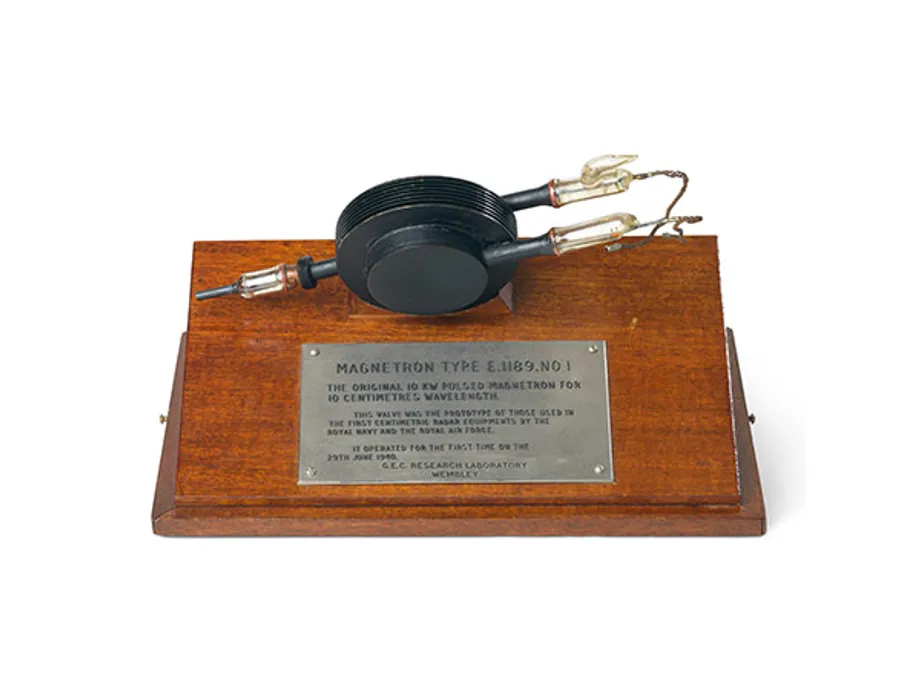Radar
Radar is an object-detection system that uses radio waves to determine the range, altitude, direction, or speed of objects. It can be used to detect, ships, spacecraft, guided missiles, vehicles, weather formations and terrain.
The radar dish (or antenna) transmits pulses of radio waves or microwaves that bounce off objects in their path. The object returns a tiny part of the waves energy to a dish or antenna.
Radar was secretly developed by several nations before and during WW2. The term RADAR was an acronym coined in 1940 by the US Navy to stand for Radio Detection and Ranging.
Cavity Magnetron
This item is a Cavity Magnetron. The plaque beneath the Magnetron reads: 'Magnetron Type E.1189. No.1. The original 10KW pulsed Magnetron for 10 centimetres wavelength. This valve was the prototype of those used by the Royal Navy and the Royal Air Force. It operated for the first time on the 29 of June 1940. GEC Research Laboratory Wembley'.
During WW2, the invention of the Cavity Magnetron provided the Allies with the short-wave portable radar that was desperately needed in order to locate surfaced U-boats in any weather, day or night.

